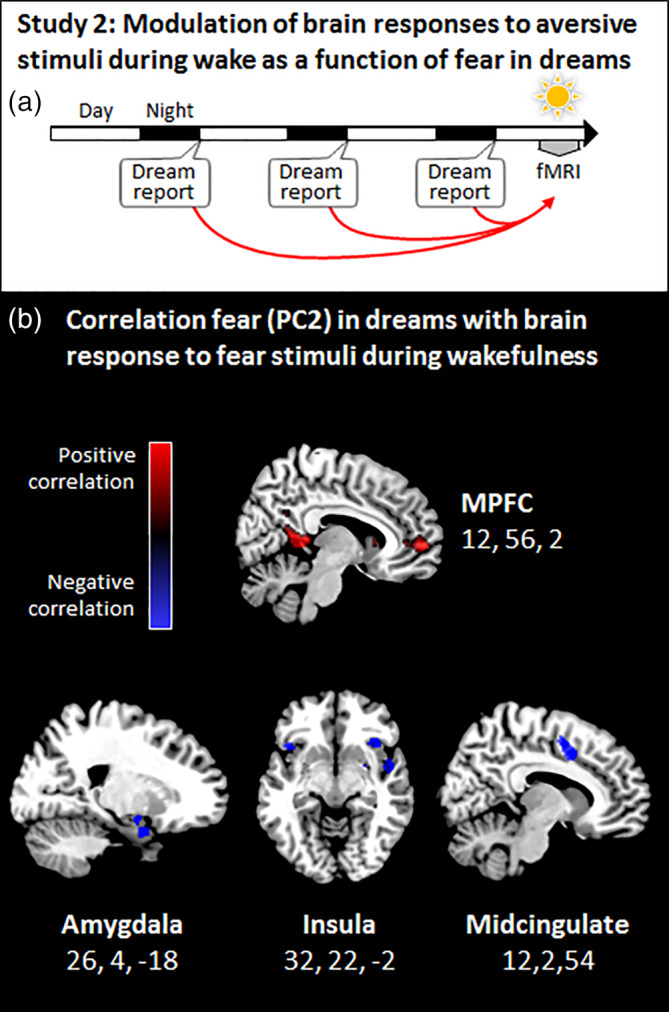Figure 2.

(a) During 1 week, participants filled a dream diary at home, and their responses to aversive stimuli were assessed using fMRI. To test for a link between fear in dreams and brain responses to fear‐eliciting stimuli during wakefulness, the individual propensity to experience fear in dreams (PC2, Table S1) was used as a regressor in a whole‐brain analysis. (b) Responses of the medial prefrontal cortex to aversive stimuli were greater in those individuals who frequently experienced fear in dreams (top panel), while activation of the amygdala, insula, and midcingulate cortex decreased in the same individuals (middle and bottom panels). Significant whole‐brain regression results are displayed on the mean structural image. Results are displayed at p < .001 uncorrected on the mean structural image.
